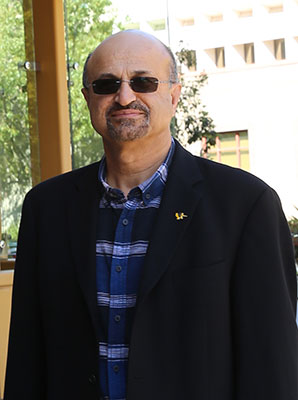Paper Featured in IEEE Transactions
 Feb. 1, 2017 - A paper written by a Samueli School research group detailing a novel, integrated approach to improving the speed and efficiency of computer systems with many-core processors is the featured article in the February 2017 issue of IEEE Transactions on Computers.
Feb. 1, 2017 - A paper written by a Samueli School research group detailing a novel, integrated approach to improving the speed and efficiency of computer systems with many-core processors is the featured article in the February 2017 issue of IEEE Transactions on Computers.
Electrical Engineering and Computer Science Professor Nader Bagherzadeh, along with recent Ph.D. graduates Ashkan Eghbal and Pooria M. Yaghini, collaborated with Dutch colleague Freek Verbeek on the paper, “Deadlock Verification of Cache Coherence Protocols and Communication Fabrics.”
Many-core systems, which leverage Network-on-Chip (NoC) systems as the interconnect, are optimized for a higher degree of parallel computing and higher throughput than their multicore predecessors. Instead of multiple cores being connected to shared busses (sets of conductors carrying data and control signals), these NoC systems connect each core to a router responsible for establishing communication protocols. Many-core systems are more easily scalable and allow higher operational frequencies, but as the number of cores increases, so, too, do the communication challenges.
Among these challenges is a concept known as cache coherence. Caches – temporary memory units attached to processors – store subsets of the main memory as a way to make operations more efficient, and all caches need to have the same view of common parameters to avoid deadlock. If two or more processors are working on the same memory location, their caches all have subsets of those locations; if one updates the value of that location, the others should be able to see this updated value immediately. If not, deadlock can occur, causing the system to spin its wheels without supplying any information.
Various algorithms and protocols are being tested to improve cache coherence. Bagherzadeh’ s team proposed an integrated and automated methodology capable of reporting whether these proposed cache coherency systems actually will be deadlock-free as well as reporting the smallest possible queue size that will ensure the smooth flow of information.
The approach allows cross-layer verification of the cache coherence protocol and the communication fabric (which includes network topology, routing, arbitration and synchronization) at one time, relating the state of the application-layer protocols to en route packets in the communication fabric.
“Our methodology is widely applicable and shows promising scalability,” Eghbal said.
-Anna Lynn Spitzer
